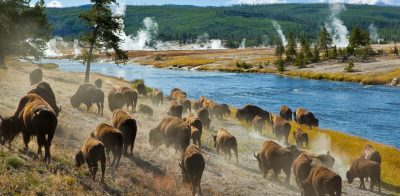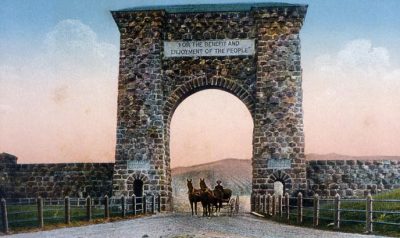Celebrating the Birth of America’s National Park System
Yellowstone–the World’s First National Park–Created 150 Years Ago

American author, historian and conservationist Wallace Stegner once observed:
“National parks are the best idea we ever had. Absolutely American, absolutely democratic, they reflect us at our best rather than at our worst.”
More recently, Ken Burns channeled Stegner in titling Burns’ award-winning PBS documentary, “The National Parks–America’s Best Idea.”
The National Park System celebrates its 150th anniversary this month. In March 1872, Congress enacted and President Ulysses S. Grant signed into law the Yellowstone National Park Protection Act. That law set aside two million acres of stunning wilderness straddling what is now the Wyoming-Montana border and declared the property Yellowstone National Park. It was the first national park on earth, and marked the beginning of America’s National Park System.
(Some environmental historians trace the origins of the National Park System even further back–to 1864, when Civil War-time President Abraham Lincoln signed into law the Yosemite Valley Grant Act. That federal law granted Yosemite Valley and the nearby Mariposa Redwood Grove to the State of California “upon the express conditions that the premises shall be used for public use, resort, and recreation.” Eventually, California ceded those properties back to the federal government, which then added surrounding wilderness areas to create Yosemite National Park in 1890–the nation’s second national park.)
Today there are a total of 63 National Parks which–along with scores of national monuments and historical sites–are managed by the National Park Service, part of the U.S. Department of the Interior. But Yellowstone National Park–along with Yosemite, the Grand Canyon and Acadia National Parks–remain the Crown Jewels of the National Park System.
And America’s creation of Yellowstone National Park 150 years ago has since inspired other countries around the world to embrace and replicate “America’s Best Idea” by establishing their own national parks.
Exactly 100 years after Yellowstone’s creation, the United Nations Educational, Scientific and Cultural Organization (UNESCO) in 1972 warned that sites of cultural and natural heritage around the globe were decaying or falling victim to human destruction. In response, UNESCO decided to establish a list of extraordinary places that are, UNESCO declared, “irreplaceable sources of life and inspiration.” Among the first 12 “World Heritage Sites” UNESCO announced in 1978 was…Yellowstone National Park.
At the northern entrance to Yellowstone stands the Roosevelt Arch. The massive, 50-foot high structure composed of locally-mined basalt rock welcomes visitors to the Park. The Arch is named for President Theodore Roosevelt, who dedicated the edifice when he visited Yellowstone National Park in 1903. Etched into the Arch are the simple but compelling words, “For the benefit and enjoyment of the people.”

Reader Comments
One Reply to “Celebrating the Birth of America’s National Park System”
Comments are closed.






I would recommend reading David Spences “Indian removal and the creation of the national parks” and the cover story from the Atlantic April 2021 which opens with the lines, “Yellowstone national park is a crime scene.” The Sierra Club itself last year acknowledged that far from having democratic origins, the national parks were created as places for white Americans to recreate particularly males to hunt and fish. I appreciate the discussion, I’m not trying to throw bombs, but when the Sierra Park itself he’s walking back some of this glorious history, it needs to be considered.